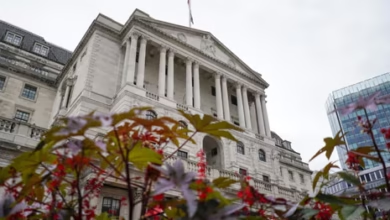Expect Volatility from U.S Elections and FOMC Meeting

U.S Election Impact
With the election approaching, markets are positioning for a range of possible outcomes. A victory by former President Donald Trump may lead to an appreciation in the U.S. dollar, supported by expectations of inflationary pressures, a less dovish Federal Reserve, and potentially increased geopolitical tensions.
In contrast, a win by Vice President Kamala Harris could initially soften the dollar, although safe-haven demand may persist given uncertainties surrounding the election’s outcome and market reactions. Here’s how different outcomes might influence key currency pairs:




FOMC Decision on Interest Rates
The upcoming FOMC meeting will offer crucial insights into the Federal Reserve’s stance amid fluctuating economic conditions. I’m closely monitoring any signs of a potential rate cut or dovish shift, which could have a significant impact on market confidence and asset allocations. Key scenarios include:
Soft Landing for the U.S. Economy: If the Fed signals a soft landing a scenario where economic growth slows gradually without triggering a recession this could sustain demand for U.S. assets, supporting the dollar. Positive foreign capital inflows would likely flow into dollar-denominated assets.
FX Market Impacts
Breaking down how market sentiment and central bank policies globally could drive currency movements:
EUR/USD: The euro remains under pressure, weighed down by the ECB’s continued dovish stance, a fragile Eurozone recovery, and subdued inflation. European markets have largely priced in the possibility of more rate cuts, creating a floor under the EUR/USD pair. However, a Trump victory could reinvigorate fears of a global trade war, which would further support the USD over the EUR.
USD/JPY: Structural changes in Japanese policy, including a shift away from Abenomics, could strengthen the yen by reducing reliance on dovish policies from the Bank of Japan (BoJ). A tight U.S.-Japan rate differential, especially if the Fed cuts rates while the BoJ holds steady, would also support the yen. I’m maintaining a neutral view on USD/JPY as election outcomes remain unpredictable, though they note that the JPY could rise if Harris wins and promote stability.
GBP/USD: The pound could be pressured by ongoing concerns about the UK’s fiscal outlook and the possibility of additional Bank of England (BoE) rate cuts. However, Credit Agricole suggests that long-term political stability under the Labor government, combined with a policy shift toward gradual EU rapprochement, might provide GBP support, particularly if the UK’s recovery continues to outpace the Eurozone’s.
AUD/USD and NZD/USD: The Australian and New Zealand dollars face headwinds due to investor sentiment toward China’s economy and ongoing U.S. fiscal uncertainties. China’s slowdown adversely impacts AUD and NZD, given their commodity-dependent economies. Additionally, Trump’s potential return could strain the AUD due to trade tensions with China, while the Fed’s rate outlook moderates upside potential for both AUD and NZD.
USD/CAD: The Canadian dollar has been trading in a tight range against the USD, with potential upside pressure if the Bank of Canada (BoC) maintains its current stance while the Fed moves toward easing. Weak global demand and lower energy prices pose ongoing challenges for CAD; however, these effects may be balanced by the BoC’s relatively hawkish approach, supporting the currency in the short term.
FX landscape is complex and heavily influenced by U.S. political and global risks. I see limited downside for the USD in the short term, with room for upside, particularly in case of a Trump win, which would likely spur safe-haven demand. CHF (Swiss franc) looks overvalued safe-haven currency, subject to pressures from an overvaluation-driven lack of competitiveness. The SNB may intervene as needed to manage CHF appreciation if global risk appetite weakens significantly.
This week, traders should be attentive to developments in both the U.S. election and Fed policy. These events will shape not only immediate market moves but also broader trends in the FX and asset markets. The evolving political landscape and central bank communication are set to be influential drivers of market sentiment, underscoring the need for careful positioning in a potentially turbulent period.
By considering these multi-layered influences, market participants can better navigate the volatility, especially in FX, as major economic and political shifts unfold.



